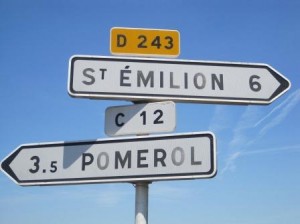
After St. Emilion, the next important region in the Bordeaux Right Bank is Pomerol.
The Area
- Pomerol is located within the Libournais area in Bordeaux, like St. Emilion
- It is considered the smallest of the fine wine regions in Bordeaux, with 3 km X 4 km diameter
- Annual production around 400,000 cases
- Only red wines are produced
- Pomerol does not have co-operatives, and has around 200 known producers
The Terroir
- Compared with the Medoc region, Pomerol experiences more of a continental climate
- There is sharper variation in temperatures between different seasons, as well as day/night time
- Rainfull also fluctuates a lot during the seasons
- The soil is quite diverse with a combination of gravel, sand and clay
The Grapes
- Pomerol produces predominantly Merlot grape
- Cabernet Franc is the secondary grape, giving the wine more ageing potentials
- The average proportion of Merlot in Pomerol wines is rather high, usually from 70% to 80%
Style of Wines
- Pomerol wines are sometimes described as velvety, with elements of concentrated ripe plum
- In the mouth, it has a more creamy and buttery feel than wines from St. Emilion
- Compared with Medoc wines, Pomerol gives less acidity and tannins
- Some wine experts consider Pomerol wines requiring shorter ageing period than the Medoc counterparts; with 12 years for the more premier chateaux already being sufficient
The Influence of Jean Pierre Moueix
- Jean Pierre Moueix and his family have been attributed to raising the fame of Pomerol in the international arena and also in renowned auctions
- They own many chateaux including Petrus, Trotanoy, La Fleur Petrus, Hosanna, Latour a Pomerol
Wines from Pomerol
- Pomerol does not have any official classification of its wines
- In 2001, Master of Wine Clive Coates and Master of Wine Mary Ewing-Mulligan had tried to rank Pomerol wines into 3 to 4 Classes, versus the 5 Growths according to the 1855 Medoc Classification
In the next issue, we will explore some of these famous chateaux and their wines.

